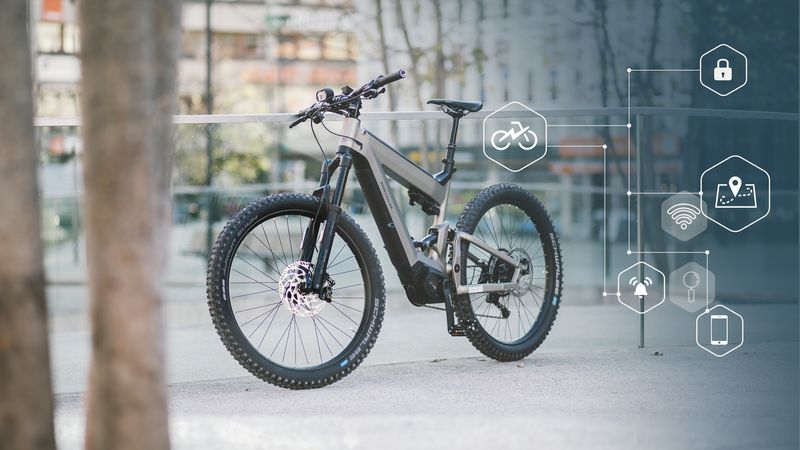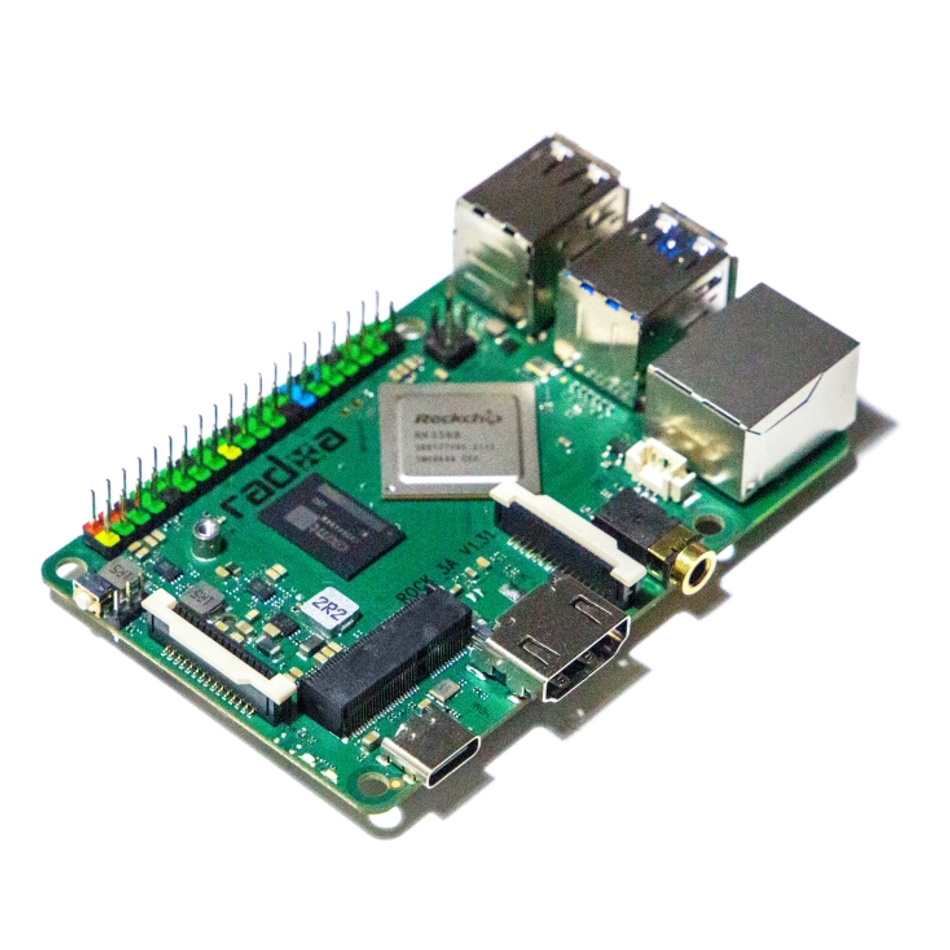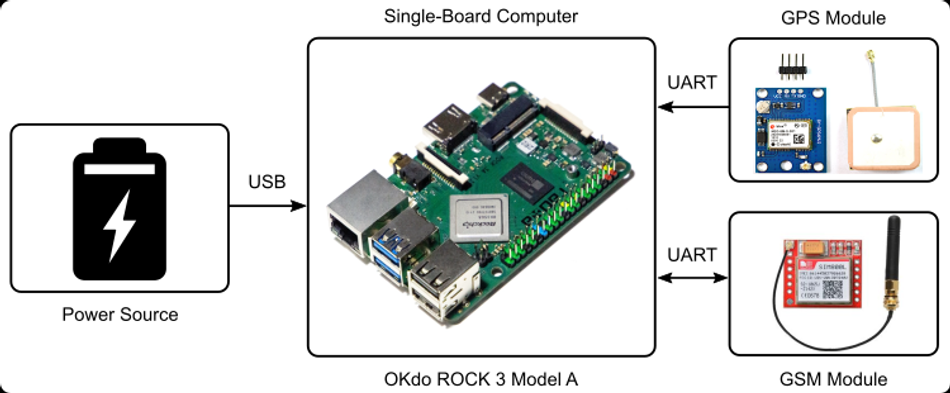Developing flexible vehicle tracking systems with SBCs
Take advantage of the low cost and high energy efficiency of SBCs to design your own tracking systems

Source: Powunity
Micro Mobility has been a worldwide trend. However, bicycles, e-bikes, and motorcycles do not have the same security and monitoring features as cars. One way to increase driver and vehicle security, monitor routes, and analyze data is to use tracking systems. This article explores how Single Board Computer (SBC) based tracking systems work, their benefits, and how you can build your own portable tracking system.
Portable tracking systems for micro mobility
Tracking systems improve safety and protection by using real-time monitoring. These systems can be used for route planning and recording, speeding up deliveries, and theft protection. Users can detect whether their e-bike or electric scooter, for example, is moving without permission and send a motion alarm to a mobile device.
However, when it comes to commercial tracking systems, it is hard to find solutions that can be customized to fulfill specific applications and users' requirements. SBCs enable you to develop your own complete tracking system, eliminating recurrent fees usually charged by commercial solution.
SBC-based tracking systems can provide features such as location information and real-time tracking, similar to several solutions on the market. However, the main advantages of these systems are their project flexibility, straightforward setup, support for Python programming, and access to open-source libraries for free For example, when developing with Python, you can use the pyserial and GPSD libraries to make it easier to use serial communication and connect with GPS modules.
In this article, we look at some options for creating tracking systems using SBCs, using the ROCK series as an example board.
Building your own tracking system with an SBC
In tracking systems, SBCs are responsible for processing information, responding to users’ requests, and managing other devices. GPS and GSM modules are also necessary to build this system. The GPS module determines the vehicle's geolocation, while the GSM module can receive user requests and send the coordinates by SMS. Some modules, such as the SIM808, integrate the both GPS and GSM functionalities. Moreover, a storage system for the software, such as microSD, and a power source are also required. For example, a 12V/6Ah lithium-ion battery would last about 15 hours considering an energy consumption of 5W for the tracking system.
For the SBC, you could use a model from the OKdo ROCK family. A good alternative for a tracking system application for micro mobility or cabs is the OKdo ROCK 3 Model A. It provides high processing power capacity from its Quad core Armv8.2‑A Cortex®‑A55 CPU, low power consumption, and a wide range of input voltage, from 5.5V to 12V, allowing a smaller and low-cost battery. The OKdo ROCK 3 Model A also comes with a variety of built-in connections and features, such as:
- M.2 E-key socket with PCIe 2.0 and a microSD card connector
- Five UART ports, one SPI, two I2C, and one CAN
- Six PWM, one ADC, six GPIO connections
- Five UART, one SPI, two I2C, one CAN, sex PWM, one ADC, six GPIO.

As the ROCK operates as a conventional computer, you will need to install an operating system to manage the hardware and software. Although several operating systems are available on the market, one of the most common and feasible options are Linux distributions. They have open-source features and a vast library available online for free. You can use the Getting Started guide for OKdo ROCK 3 Model A to learn how to download and install Debian Bullseye onto an SD card and perform the basic system setup. However, we recommend you to use an eMMC instead of a SD card to improve the reliability of your system.
Tracking and connectivity
For the tracking and communication system, you will need GNSS and GSM modules. The GPS module calculates the vehicle's location, and the GSM receives and transmits data via the internet or SMS. Therefore, the tracking system could only respond to the server or the smartphone application owhen requested, reducing the energy consumption (the tracking system would not operate 24/7). It is essential to check if your region has support for the GSM network you plan to use. For example, in some locations, the support for 2G networks no longer exists, so you would need to adapt your project to 3G or 4G networks. However, 2G or 2.5G systems consume less energy compared to 3G and 4G system, making them better option for portable devices.
The SIM7600CE module is a good option for adding GPS and 4G connectivity to your project, offering low power consumption (50~300mA at 5V) and compact construction. Another option would be to use the GPS module NEO-6M for tracking the vehicle and the GSM module SIM800L for sending the location information. These modules provide different operation modes to make it possible to optimize the power consumption of your system. For example, the SIM800L provides a stand-by mode that consumes 18mA, while 80mA during network transmission mode. In addition, the NEO-6M and SIM800L modules use the commonly supported UART to perform the communication with the SBC. It is important to note that GSM modules operate like a cellphone. Therefore, you would need to connect a SIM card to receive messages and send data and have a cell phone plan to use it.

When connecting these modules to the SBC, you can transmit GPS data to a tracking website or send an SMS to the owner with the current position of the tracked vehicle. However, you need to be careful about the phone plan you are using on the tracker, as messaging costs can become expensive if it constantly requests your location.
Power source
Finally, you will need to select the power supply for your system. Depending on the vehicle you are installing the tracking system, you will have different options.
If you install the tracker on an e-bike or motorcycle, you can use its battery for power. It will not affect the range of your e-bike since the power consumption will be considerably low. The power consumption would be less than 15W, considering a system composed of the ROCK 3 Model A and NEO-6M, and SIM800L modules running continually at full capacity. However, it will not be the case since tracking systems run intermittently, using energy saving mode run be in standby most of the time, reducing energy consumption. However, a small backup battery could also be interesting since the battery can run out of power. When installing the tracking system in a car or motorcycle, you do not have to worry too much about power shortage since you can use the vehicle’s battery.
ROCK 3 Model A uses the USB Type-C port for the power supply. If you want to power ROCK 3 Model A standalone, use power adapter with fixed voltage in 6V to 24V range on the USB Type‑C. Or, you can use a USB PD/QC power adapter. Therefore, you have a different power supply, allowing you to choose the one that best suits your project.
When installing the GPS tracker on a conventional bike, you will have to install a battery. Another alternative is to power the system using a dynamo – that could also recharge the battery – which provides electricity from the rotational energy of the bicycle wheel.
Complementary features
An exciting feature to add to your tracking system would be a protection system, such as an engine immobilizer for motorcycles. This would allow you to remotely disable engine operation by cutting the ignition or fuel pump power via a relay. For e-bikes, it could disconnect the electrics or trigger an alarm. In this case, you would need to add some devices to your system.
First, you would need to add this protection feature to the software running on the SBC. The SBC would need to be capable of receiving and identifying the trigger message through the GSM module and activate the protection system.
You could also make the system even more complete by developing a web application or app to show data from the tracking system. If your web application has an API, the SBC could communicate using API requests. Another option could be for your web application to perform requests about the vehicle location to the SBC when necessary. In both cases, you would have access to real-time and historical data making it possible to perform real-time route optimization or statistical analysis of historical data. This system would be ideal for package delivery systems, making it possible to estimate remaining travel time or even create optimized delivery routes.
Conclusion
SBCs are a versatile solution for creating customized tracking systems with multiple features to suit any application. With the Okdo ROCK family, you have access to low-cost SBCs such as the ROCK 3 Model A that provide more than enough processing power to run tracking systems, and enable you to build your own portable tracking system with multiple features.
The ROCK Engineering Challenge
Do you have an idea of how to use the ROCK? The challenge is open to all OEM's, startups, research teams, and students working on innovative SBC applications. Show the world what you can create with cutting-edge single-board computer hardware.
We invite engineers, entrepreneurs, inventors, and developers to submit an idea for a part, product, or system that takes advantage of the ROCK single-board computers.
The first 500 valid entries will receive a ROCK board of choice worth $45 - $159.
Simply tell us what you are working on, and we'll send you a piece of cutting-edge hardware to bring your ideas to life.The most-cutting edge entry will be rewarded with a grand prize of a $50,000 partnership with electronics company OKdo to scale up their project idea.
The challenge is now open until April 12th, 2023. Read more here.
How to Enter?
Submit your entry via this form. You will be asked for a comprehensive idea description, details of your team, and images or videos that support your idea. The challenge is open until April 12, 2023.
We can’t wait to see your entries!
References
[1] https://powunity.com/en/narrowband-iot-vs-2g-the-right-gps-tracker-standard-for-your-e-bike
[2] https://powunity.com/en/internet-of-things-bikes-and-gps-tracking
[3] https://randomnerdtutorials.com/guide-to-neo-6m-gps-module-with-arduino/

